Last week I started a series of posts about fodmaps, fructose malabsorption, amines and salicylates where I talked about fodmap foods. And my daughter diagnoses with fructose malabsorption. If you missed it, you can read part 1 here.
Part 2 – Fructose Malabsorption
So what is Fructose Malabsorption –
Fructose malabsorption is a digestive disorder. 1. Wiki.
“Fructose is a sugar found in a number of foods including honey, wheat, fruit and vegetables. Fructose can come as a single sugar or as a chain of sugars called Fructans.” Shepherd Works
Fructose digests in the small intestines. Fructose needs glucose to digest well. In other words, Fructose is “piggybacked” across the intestine by glucose.
People who have fructose malabsorption are unable to digest many foods high in fructose due to impairment of the intestine.
What are Fructans – The most common structural forms of fructan are Inulin, Levanare and Geraminan . The human body absorbs only 5% of fructan. However, estimations show that the daily intake in the USA may vary between 1-20 grams and possibly higher due to the recently discovered benefits of inulins. Dietary trends indicate that high levels of fructans are standard in the European and American diet, as more wheat based products such as breakfast cereal, pasta, and bread consumption rise.
Inulin is an ingredient that pops up in all sorts of food items, mainly due to its ability to adapt its characteristics. It can be used to replace sugar, fat and flour in any given product. The largest amount of inulin is found in chicory root and Jerusalem Artichokes. Inulin is a fibre which serves as a prebiotic serving as food for your good bacteria in your intestines. Inulin is being promoted as a fibre supplement and as a prebiotic. It also increases calcium absorption. All in all, it sounds like it is a good health supplement. However given the foods that are now using this as a supplement boost the average dosage of inulin is way above our bodies ability to digest it. You will find it in almost any packaged item on the grocery shelf. Muesli bars, chocolate bars, health drinks, powdered milk drinks, yogurt, flavoured milk, cereal, pastries, bread, flavoured tea, sweeteners and herb and spice mixes to name but a few. The best policy of avoiding too much inulin is to reduce the number of processed foods from your shopping list.
Symptoms of Fructose Malabsorption
All of the symptoms for Fructose Malabsorption are if not identical than very similar to those found in people with fodmaps. IBS (Irritable Bowel Syndrome) is the common term, but other classifications are “functional diarrhoea”, “functional bloating”, “functional dyspepsia”. Ref Applied Neuroscience
- Bloating
- Diarrhea
- Constipation
- Headaches
- Abdominal distention
- Abdominal discomfort
- Depression
Secondary symptoms such as bacterial overgrowth, impaired gut lining and the presence of candida or yeast overgrowth can all be common sidekicks mainly due to the level of fermenting foods that become lodged in the intestines.
How To Diagnose Fructose Malabsorption –
Breath testing using hydrogen after an oral fructose solution. You can order these tests through a medical practitioner or natural therapist. In Australia, you can purchase tests through Stream Diagnostics in Victoria, Australia.
How To Treat Fructose Malabsorption –
Avoiding foods that have a higher ratio of fructose to glucose is necessary as well as foods that are high in fructans. Most people suffering from food sensitivities can try a low or no fodmaps diet. Usually, this process of elimination takes a few weeks. By removing the irritant foods, the inflammation in the gut can calm down and start to heal. Then a challenge period will follow with the irritant foods (1 at a time) over several weeks.
Depending on whether symptoms reappear or not will determine whether that food or foods are reintroduced back into the diet.
The gut lining will usually need some repair which involves treatments with herbs, probiotics and slippery elm powder.
Avoid eating foods high in Fructose – Please note – this is possibly not a complete list and may also differ from other lists out there, including the list in my fodmaps article. The one thing that you have to prepared for initially is “confusion” with a capital C. There is a lot of conflicting lists and hopefully, I won’t add to it but very sorry if I do.
Fruit: apple, pear, guava,
honeydew melon, mango,
nashi fruit, pawpaw/papaya,
quince, star fruit (carambola), persimmon, rambutan
watermelon and on some lists, there are grapes, blackberries, raspberries, cherries.
Dried Fruits: Personally I would just say all dried fruits are out, but the ones that are the highest are; Raisins, currants, figs, peaches, apricots, prunes.
Vegetables: (Fructans) Onions, leeks, garlic, onion powder, garlic powder, shallots (white end only), radicchio lettuce, brussel sprouts, okra, fennel, peas, cabbage, asparagus, artichokes, peas, beets, dandelion and chicory.
Legumes: All of them have fructans
Sweeteners: Honey, High Fructose Corn Syrup, Agave, Fruit juices
Coconut and coconut products: Cream and Milk and for some the water.
Coconut water has a higher ratio of glucose to fructose and should be deemed okay, but it is listed as a precautionary food.
Unfortunately, my daughter can not have coconut milk or cream as it gives her nausea but can have the oil and a tiny amount of shredded coconut, so all was not lost.
However, some people may not be able to tolerate the shredded coconut either.
Is Fructose Malabsorption something that you’ll have for evermore?
Some research/reports indicate that the patient once diagnosed with fructose malabsorption disorder will, in fact, have to deal with this for the duration of life. However I believe that some of the symptoms can be lessened, and some completely deleted after following the elimination diet for awhile. Fructose malabsorption doesn’t have to be a life sentence. As like any digestive disorder, the gut lining is usually in disrepair and needs a little help by stopping the irritant foods and then healing the lining of the gut and replenishing the gut flora. But it’s different for all people. At the end of a challenge period, where foods are introduced, 1 by 1, the patient will know which foods need to be left out for much longer and maybe altogether.
How to cope with a limited fructose diet –
Initially, you will freak out – well maybe not everyone, but it’s a natural reaction to have a head spin for a few days to a couple of weeks, even for myself, who has done a myriad of elimination diets. It took me a good 2-3 weeks to get my head around what I was buying and where, what I was cooking and how and who was eating what.
But never fear – have faith. Just take it slowly and ease into it. In my next post, I’ll add some tips for adjusting to an elimination diet and feeding a family at the same time.
If you think you may have food intolerances or fructose malabsorption than seeing a doctor or natural practitioner can offer diagnosis and support.
Further reading: Fructan – More than a Reserve Carbohydrate







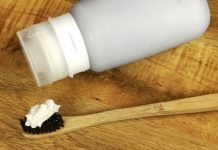


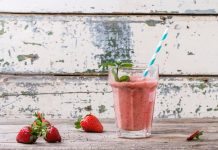
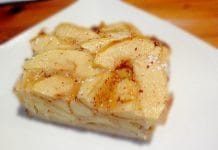

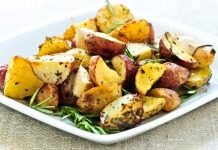

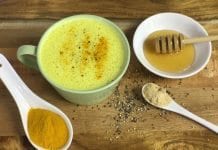
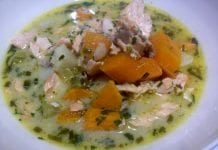
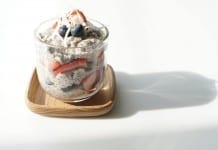














ah ha, I didn’t realise there were more parts to the article.. many thanks… I think the easiest diet in the world is ‘Meat and Water’..